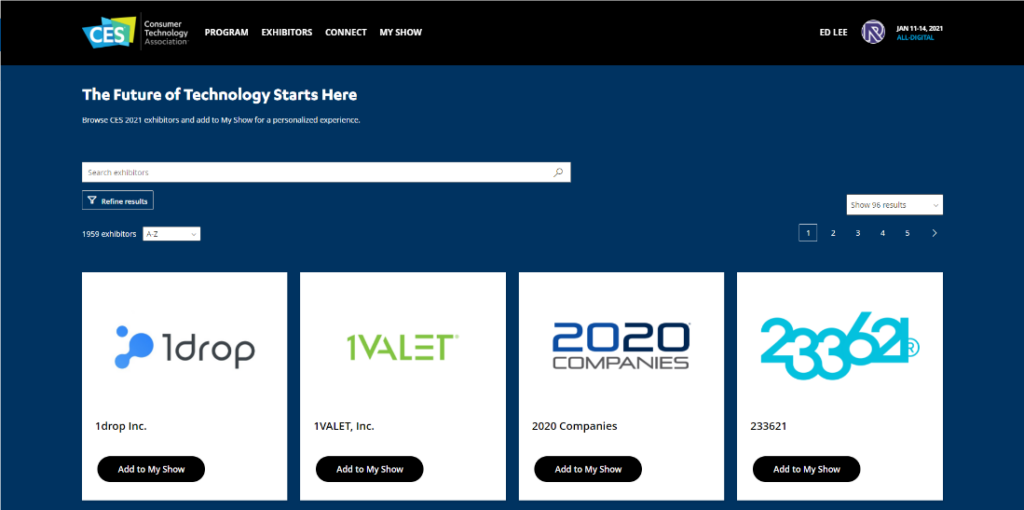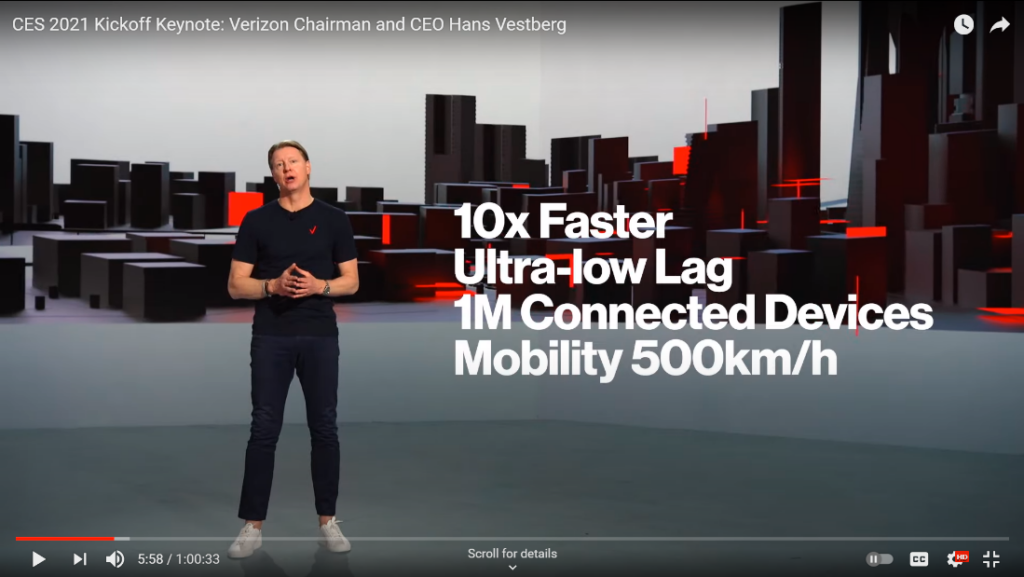For many people involved in the Consumer Electronics industry, the beginning of January means an annual trip to Las Vegas and the CES trade show. Because of COVID-19, for the first time in its history, this year’s show was virtual.
Here are some of our impressions of the show and its execution.
A virtual CES had its advantages from an attendee perspective. First and foremost, no travel was involved. I got to attend from the comfort of my home office, sitting in front of my two screens. Coffee and food were just steps away, too.
The things I did not miss about a live event in Las Vegas included the crowds at the airport and the hours wasted on air travel to and from Las Vegas, the overpriced and underwhelming Flamingo Hotel room, the crowds and lines at the monorail, cab stands, and shuttle buses, the crowds on the show floor and the Strip, miles of walking between meetings and covering the show floors, being late to meetings because of the crowds and the distance between venues. Did I mention I didn’t miss the crowds?
What I did miss was the energy generated by a live event, the face-to-face interactions with friends, colleagues, and exhibitor staff, the formal and informal conversations with people, the ability to walk into the middle of a demonstration and listen in on the questions others had, the ability to hold or touch an actual product, and the chance to search the halls for the hidden gems that were tucked away in some far off corner.
The website for the virtual event was divided into the speaking and conference programs and an exhibitors section.
The good
I got to attend more press conferences and keynote speakers that I have in the past. I tuned in to LG, Microsoft, Panasonic, Samsung, Sony, TCL, Verizon, and Walmart, and I was not worried about getting there 30 minutes early to get a good seat!
The presentations and keynote were excellent from a production standpoint. They were professionally produced with lots of green screen graphics. There was plenty of discussion about how COVID change everything last year. Additionally, many new Consumer Electronic products, concepts, and services were announced, like:
- Verizon and its story around how 5G ultra-wideband is “the platform that makes other innovations possible,” offering 10X faster speeds than 4G, ultra-low lag times, support for more connected devices per square kilometer, and support for mobile connections up to 500 km/hr.
The promise of 5G is finally becoming a reality. RAR expects to see widespread adoption of 5G handsets this year as more affordable phones become available. It’s not too early for marketers to start talking about the coming of 6G.
- LG teasing its rollable display phone to tablet handset and TCL previewing its CSOT rollable (6.7” to 7.8”) and 17-inch scrolling displays for mobile devices.
I am anxious to see in what the final formats they are “rolled out” in look like. The mechanical engineer in me wonders about the life span of any rolling mechanism and how much abuse these devices will be able to withstand.
The bad
The exhibitor area was underwhelming. Given that CES is a tech show, I was expecting a lot more from the exhibitor section. CE is about showing off new products and services and interacting with exhibitors is a major reason for attending the show. This is where things could have been better executed.
The exhibitor area listed the logos of 1,959 exhibitors alphabetically and you could search for an exhibitor by name or refine the list by topic of interest, like AI, Smart Home, Robotics, etc. I wish there would have been a text only option to view the list of companies which would have made scrolled through the list a whole lot faster.

Discovery of new companies and products was where things got hard. Scrolling over the company name and logos on the main page only allowed you to click on the link to go to the company page. There was a distinct lack of company description and product offerings as you hovered over the logo. So if you were not familiar with a company there was not a lot of incentive to click on the logo, based just on the company name.
Clicking on a logo brought up an Information consent page for sharing your registration information. If you clicked, No, because you were unsure what the company did, you could not go back and change your response to Yes, if you later decided you were interesting in sharing your information.
Once on a company page, you found a description of the company and its products/services and sometimes a video or product information to download. “Talking” to the company involved a “Chat” option, if someone was manning the chat. Otherwise you could choose to send a message to a person listed in the “Contact Us” area and hope they got back to you.
This whole process was too onerous on attendees. There was little incentive to explore and try to find the hidden gems. The interactions with the companies was not very user friendly and asynchronous if you had to rely on messaging people.
Our Viewpoint
While attending a virtual CES was great for avoiding travel, expenses, and crowds, at the end of the show, it did not feel like I was at CES this year. It was difficult to get a feel for what the buzz of the show was. Was it 5G, AI, robots, drones, health, security, etc.?
Trade shows involve a lot of interactions with exhibitors, other attendees, and friends and colleagues. While CES offered text and email communications, it lacked face-to-face interactions. I have to say that I missed that the most.
As CES plans for a hybrid in-person, plus online event in 2022, they need to make the online exhibitor site much more interactive and offer visitors much more than an exhibitor landing page. CES is supposed to be on the cutting edge for technology. Perhaps in the future, augmented and virtual reality could play a bigger role and be a proving ground for these technologies and their everyday use.


